Chapter 10
Bringing Teams into the Physical World
IN THIS CHAPTER
![]() Communicating hands free in Teams
Communicating hands free in Teams
![]() Looking at conference room hardware
Looking at conference room hardware
![]() Finding the right device for your needs
Finding the right device for your needs
Meetings and communication underwent a revolution in the past couple of decades. The Internet and connectivity changed the game of global communications. I still remember calling friends in other parts of the world using a traditional landline phone and hearing a tinny echo in the background. They always sounded so far away, and this made sense at the time because they were. Then Skype came along, and I got used to calling friends anywhere in the world using the Internet and seeing them as we spoke.
Then came the coronavirus pandemic in 2020, which forced many more people to find ways to communicate with coworkers and loved ones over the Internet. Everyone from tech-savvy office workers to 4-year-old preschoolers found themselves online for meetings, school, or social get-togethers using Skype, Zoom, and Microsoft Teams.
As you discover in Chapter 9, you can make video calls directly through the Teams portal! Teams also includes a lot of features that are designed specifically for working with the groups of people in your teams. One area that has really accelerated in the past few years as Teams has come onto the scene is the hardware. Hardware companies have started designing gear optimized and designed specifically for Teams.
In this chapter, you explore some of the latest hardware you can use with Teams, including gear designed specifically for you as an individual, such as headsets, as well as gear designed for meeting rooms and conference calls. If you love gear like I do, then this chapter is for you!
Discovering How Teams Is More Than Software
It is easy to forget that a software product like Microsoft Teams can encompass more than just software. Teams is designed for communication with other people, and as a result, it requires physical devices such as phones, headsets, screens, and projectors to facilitate that communication.
These types of devices have been around for years, but manufacturers are starting to design them for specific scenarios and specific software applications such as Teams. Microsoft has a web page (www.microsoft.com/en-us/microsoft-teams/across-devices/devices) that describes these devices in detail and guides you on where to purchase them (see Figure 10-1).
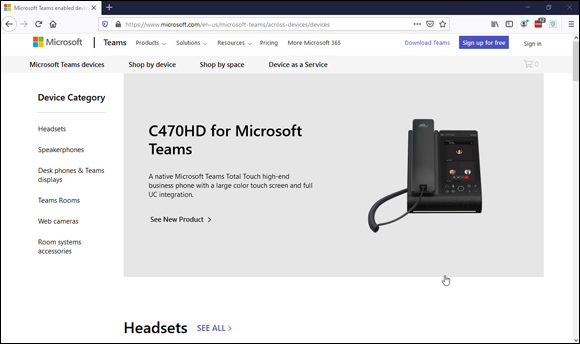
FIGURE 10-1: The Microsoft web page dedicated to hardware for Teams.
Going Hands Free with Teams
Using your computer to make and receive phone calls is becoming the standard, especially when people have to work from home for long periods of time. Some organizations have embraced this practice fully, while others are sticking with the tried and true form factor of a traditional phone. In either case, you can find gear you can use to free up your hands while you are on a call or in a meeting.
The two primary categories of such gear are headsets and speakerphones. If you work in an open environment or in a shared space, a headset is probably the better choice. If you are fortunate enough to have an office with four walls, you might prefer a speakerphone. Microsoft has some featured headsets and speakerphones on its product web page as shown in Figure 10-2 and Figure 10-3.
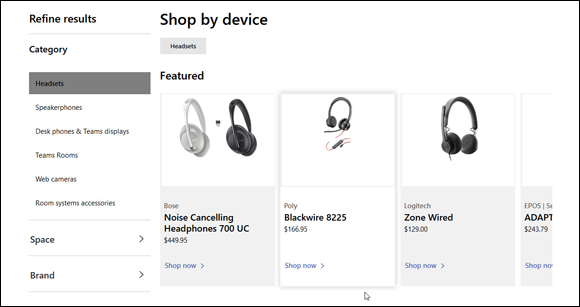
FIGURE 10-2: The featured headsets on the Microsoft product web page for Teams.
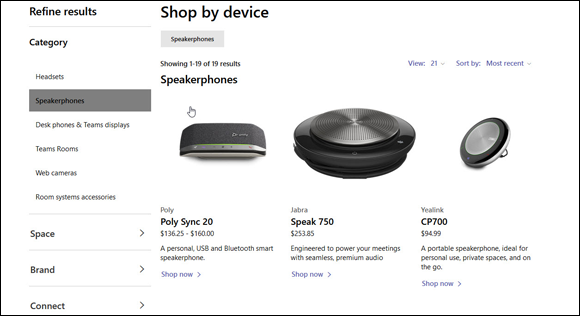
FIGURE 10-3: The featured speakerphones on the Microsoft product web page for Teams.
My personal preference is a headset with full ear cover and an attached microphone. I find that I feel more immersed in the call when I use such a headset, and I can easily tune out distractions such as other conversations that might be happening around me.
When I need to include others in the conversation, I will switch to a speakerphone so that everyone around me can hear and participate in the meeting. Some nice speakerphone features I have seen include omnidirectional microphones so that audio can be captured from every angle including if you are tilting your head or not speaking directly into the microphone. Generally, any microphone will do, however. I have yet to see a microphone that works with a computer that Teams cannot use.
Getting Visual with Cameras
In my opinion, one of the most important aspects of a successful online meeting is being able to see the other people. The reaction of a person says more about the tone of the meeting and how it is going than most of what is said in the meeting. A good camera will make an online meeting feel like an in-person meeting.
The cameras Microsoft displays on its products page are top-notch and designed and certified to work with Teams. However, just like headsets, any camera that works with your computer will usually work with Teams.
I have used very expensive cameras and very inexpensive cameras. The value that is added by adding a camera to a meeting is extraordinary. The value that is added by using more expensive cameras is debatable, but there is no doubt that the extremely high-end cameras are great when they fit your budget.
Using Desktop Phones for Teams
Using a desktop phone with Teams provides an interesting new dynamic for communications. A desktop phone for Teams looks similar to a traditional phone; however, in addition to speaking voice to voice as you do with a traditional phone, a Teams-specific phone also includes a screen that can be used for presentations and video. The desktop phones Microsoft features on its product web page are shown in Figure 10-4. Desktop phones are the one type of device I recommend making sure it is specifically designed and certified for Teams.
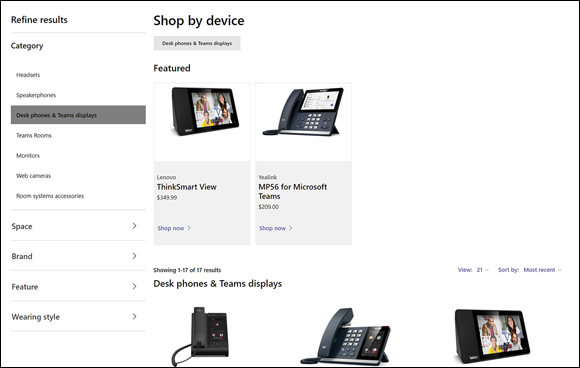
FIGURE 10-4: The featured desktop phones on the Microsoft product web page for Teams.
These phones are not cheap, and that is because they are essentially a small computer designed specifically for online meetings. To set them up, you sign into the actual phone like you would normally sign into your computer.
I cover setting up a phone number and using Teams as your phone system in Chapter 11.
Turning a Conference Room into a Teams Room
A traditional conference room, also called a meeting room, generally has a table with chairs around it, a projector, and perhaps a speakerphone for remote participants to call into the meeting. Most organizations have some form of conference room at their locations. I have been in hundreds of them at clients all over the world, and it is remarkable how similar they are. You could drop someone into a conference room in Manila, Philippines, and then in Seattle, Washington, and they would likely be hard-pressed to tell the difference between them.
Teams has excelled with features and devices that augment these conference rooms and turn them into a digital space that is accommodating and inclusive of remote participants. One such device is a conference phone built for Teams that allows you to enter the room, push a button, and have the room automatically join the Teams meeting.
Another exciting development in conference room communication systems are the Teams room systems (see Figure 10-5). Room systems are a combination of conference phones, cameras, projectors, and microphones designed to transform communication.
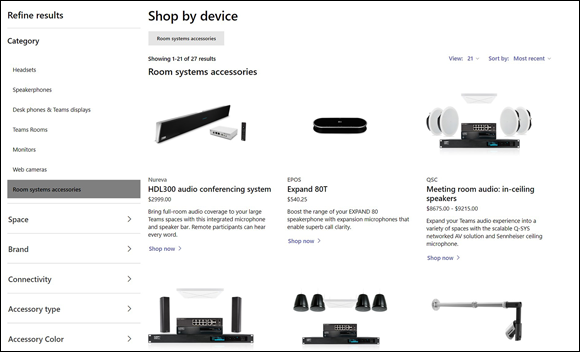
FIGURE 10-5: The featured room systems on the Microsoft product web page for Teams.
There is nothing stopping you from buying all the pieces that make up a Teams room system and assembling them. The benefit of a room system package is that everything you need comes as part of the system, so you don’t have to figure out what pieces work best with each other.

 The devices Microsoft includes on its products page are designed specifically for conferencing and calling and are certified for use with Teams. For personal devices, like headsets and video cams, you can usually use just about any device that is compatible with your computer. For other devices, like room systems and conference phones, you are best to stick with the recommendations by Microsoft, or at least get a clear statement from the manufacturer that the device works with Teams.
The devices Microsoft includes on its products page are designed specifically for conferencing and calling and are certified for use with Teams. For personal devices, like headsets and video cams, you can usually use just about any device that is compatible with your computer. For other devices, like room systems and conference phones, you are best to stick with the recommendations by Microsoft, or at least get a clear statement from the manufacturer that the device works with Teams.